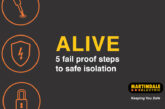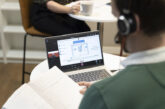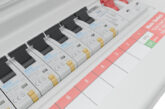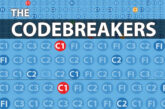
Just how effective is interactive, hands-on learning in developing the future generation of electrical professionals? Matthew Davies, Teacher and Lead in Electrical Installation at Tameside College shares his experiences.
Q. What is your electrical industry background and how did you get into teaching?
I started my apprenticeship at 17. Electrical installation wasn’t something that I had necessarily envisaged, however an opportunity came to light and it was something I decided would be advantageous to me personally.
I completed my apprenticeship and worked largely throughout the industrial sector of the industry, which involved work on the railways, in large factories and other such environments.
After getting some experience under my belt I decided give it a go on a self- employed basis. This was a great decision and one that formed my ability to run and manage jobs and take on large amounts of responsibility.
With regard to teaching, it is something which I had thought about for a long time. During my time working self-employed, I completed an HND in construction and property and also a BSc (Hons) in Quantity Surveying. These qualifications increased my motivation for the academic side of the industry and gave me a desire to implement my knowledge and help learners to achieve.
I have long thought that the construction industry in general is commonly seen as purely ‘hands-on’, however I am a massive advocate of how academic and practical principles should be interlinked.
Q. Who do you work for and what sort of courses do you provide?
I currently teach at Tameside College, where we provide a high quality teaching environment across multiple courses. We offer courses from Level 1 though to Level 3 technical, whilst also teaching apprenticeships. Further to this we have an excellent commitment to our adult provisions which is really important as this allows adults a further chance of achieving their desired qualifications.
Q. Although much of teaching comes in the form of spoken or written word, you’ve decided to take a different approach to things with interactive displays/sessions – why is this, and what value do you think it brings to delegates?
Teaching provides me the opportunity to not only help learners achieve but also make learning an engaging environment.
Interactivity is increasingly important as we have moved towards a largely digital society, so we can now make use of resources such as Padlet, where group collaborative learning is made engaging and allows real time feedback, peer collaboration and also creates excellent discussion opportunities.
We also utilise the new Tradefox App which offers a fantastic opportunity to provide safe isolation training in a simulated manner. This works excellently on the touch screen whereby learners can complete the full safe isolation procedure in a controlled classroom environment.
There are further developments in the use of interactive resources at our college and we now have a fully immersive iHub, which provides learners the opportunity to virtually work in various construction environments, creating a real world learning scenario.
Q. Tell us more about some of the interactive displays/products you have on offer, how they work/function and the subjects they cover?
In addition to the aforementioned resources, we’ve been able to introduce QR codes for revision resources, while learners have created display boards to help cover the theory of wiring of lights, sockets etc. Furthermore, the creation of infographic posters for testing, safe isolation, common tools used etc. has proved a useful aid.
Q. Does interactivity in teaching also make it a more enjoyable experience for the teacher/lecturer?
I believe that one of the main requirements as a teacher is to have a passion for what you are teaching. This passion is then transferred on to your learners. Using interactive resources allows more engagement which in turn makes teaching more enjoyable for both learners and us as teachers.
Q. Have you had a hand in creating any of the interactive items you use to teach?
I’ve spent time creating interactive items, including the revision packs which are accessible by QR codes and offer a number of revision methods, either in the form of interactive quizzes, exam style questions or flashcards. Where possible, I also try to create interactive game style lesson resources that bring a competitive element to learning.
One big thing I’ve decided to implement this year across electrical is a fully digital practical training book – this has streamlined the feedback process whilst allowing learners greater insights into their strengths and also areas of development.
Q. Do you think interactivity and fun/stimulation is going to be a key way of encouraging young adults into this profession in the future?
I do believe this is an advantageous way of enticing young people into the electrical industry. The world in general is becoming more technologically advanced and it is important to allow technology and interactivity to be used in a positive way.
Q. What sort of impact has interactivity had on the results/performance of the delegates that you teach?
In terms of engagement and retention of knowledge, the use of interactive resources has been massively positive. We’ve seen a much increased level of feedback because learners engage greatly when teaching is offered in the form of, say, verbal recording or short video recording. There’s no doubt that my learners are far more receptive to these methods of feedback.
Find more industry features here










